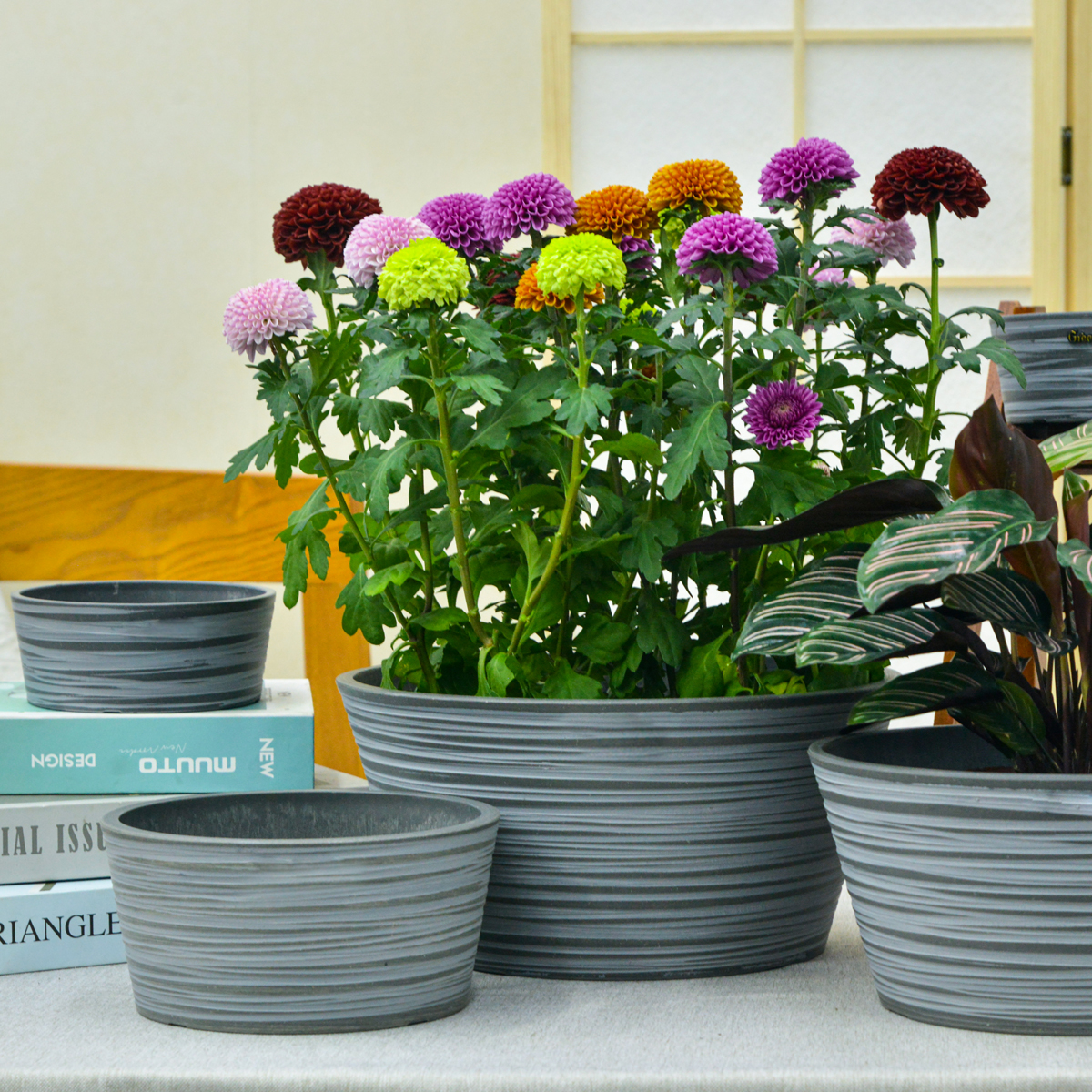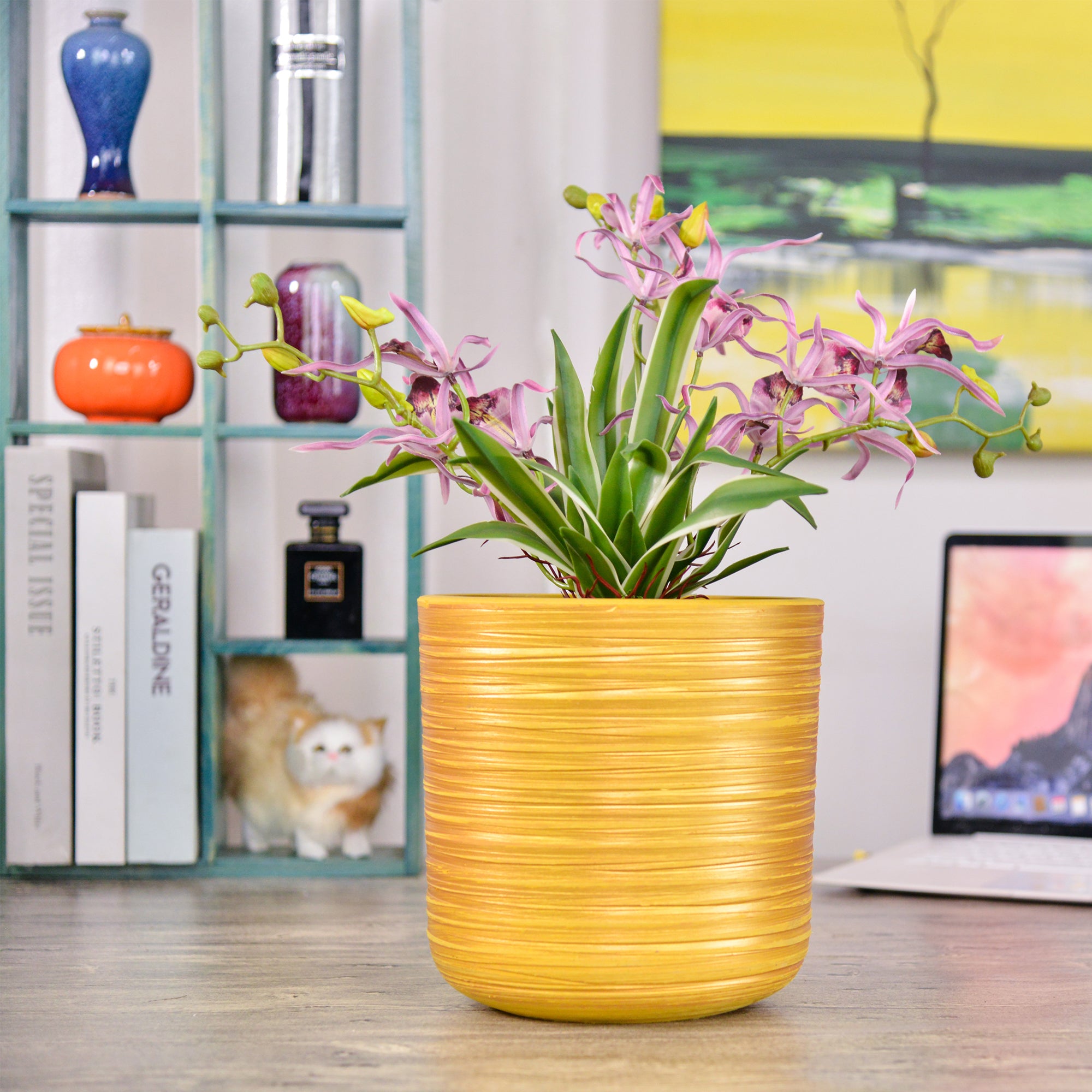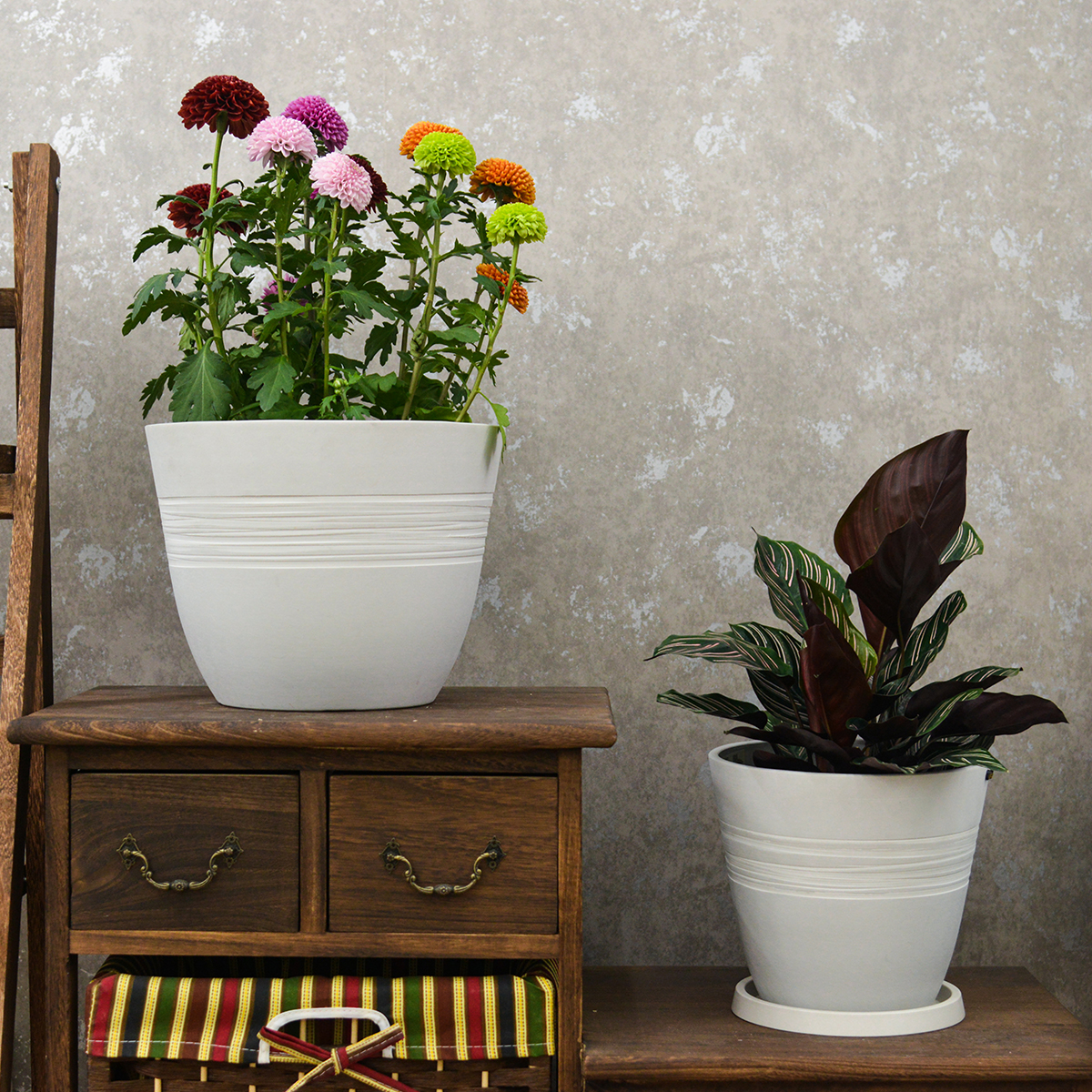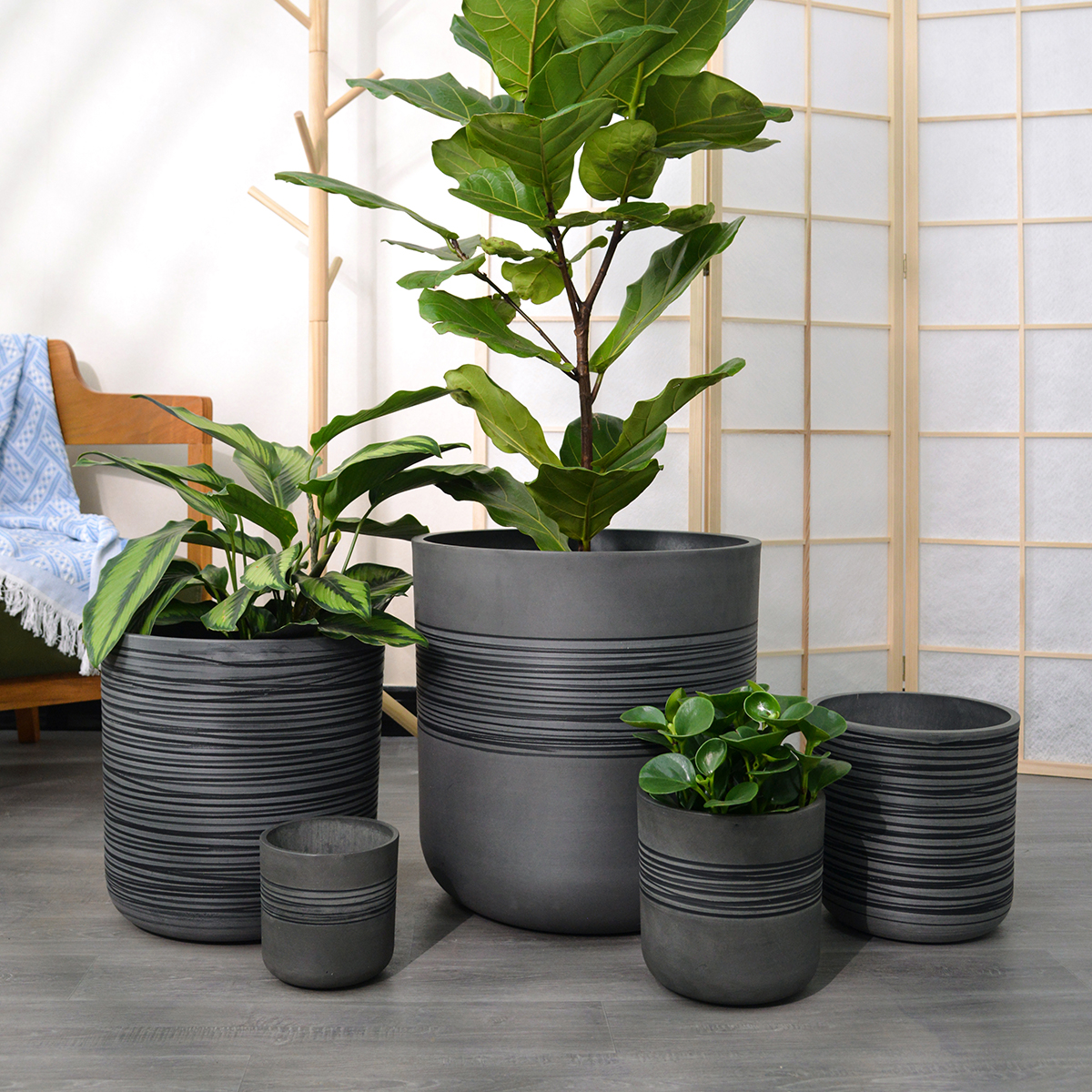What Are Some Common Planter Problems? Troubleshooting Tips for Healthy Container Gardens
Growing plants in planters offers numerous benefits, but even experienced gardeners can encounter challenges. Identifying and addressing common planter problems early can help keep your container garden thriving. This guide will explore some of the most frequent issues that arise with planters and provide practical tips for troubleshooting them.

Common Planter Problems and How to Solve Them:
Here are some of the most common problems you might encounter with your planters:
1. Drainage Issues (Too Much or Too Little Water):
- Problem: Plants in planters are susceptible to both overwatering and underwatering due to the limited soil volume.
- Symptoms of Overwatering: Wilting leaves (ironically), yellowing leaves, soft and mushy stems, mold or algae growth on the soil surface, root rot.
- Symptoms of Underwatering: Wilting leaves, dry and crispy leaf edges, stunted growth, soil pulling away from the sides of the pot.
- Solutions:
- Ensure Proper Drainage: Make sure your planters have adequate drainage holes. If not, consider drilling some (carefully, depending on the material).
- Use Well-Draining Potting Mix: Avoid using garden soil in containers, as it retains too much moisture. Opt for a potting mix specifically formulated for containers.
- Water Correctly: Water thoroughly when the top inch of soil feels dry to the touch, but avoid letting the pot sit in standing water. Adjust watering frequency based on weather, plant type, and season.
- Consider Planter Material: Terracotta pots dry out faster than plastic or glazed ceramic.
2. Nutrient Deficiencies:
- Problem: Plants in containers rely on you to provide all their nutrients, as they can’t access them from the surrounding ground. Nutrients in potting mix are eventually depleted.
- Symptoms: Yellowing leaves (especially older ones), stunted growth, lack of flowering or fruiting, pale foliage.
- Solutions:
- Use a Good Quality Potting Mix: Many potting mixes contain slow-release fertilizers.
- Fertilize Regularly: Once the initial nutrients in the potting mix are used up, you’ll need to fertilize regularly with a balanced liquid fertilizer or slow-release granules according to the product instructions.
3. Pests and Diseases:
- Problem: While planters can sometimes offer a bit of protection, they are not immune to pests and diseases.
- Common Pests: Aphids, spider mites, whiteflies, scale, fungus gnats.
- Common Diseases: Fungal diseases (like powdery mildew or black spot), root rot.
- Solutions:
- Inspect Plants Regularly: Catching infestations or diseases early makes treatment easier.
- Use Appropriate Treatments: For pests, try insecticidal soap, neem oil, or beneficial insects. For fungal diseases, improve air circulation, avoid overhead watering, and use a fungicide if necessary.
- Use Clean Potting Mix: Start with fresh, sterile potting mix to minimize the risk of introducing diseases.
4. Overcrowding:
- Problem: Planting too many plants in a single container can lead to competition for resources like water, nutrients, and light.
- Symptoms: Stunted growth, yellowing leaves, weak or leggy plants, increased susceptibility to pests and diseases.
- Solutions:
- Give Plants Enough Space: Choose a planter size that is appropriate for the number and type of plants you want to grow.
- Thin Out Plants: If you’ve overcrowded a planter, consider gently removing some of the plants and transplanting them into their own containers.
5. Root Bound Plants:
- Problem: When plants outgrow their containers, their roots can become tightly tangled, circling the inside of the pot. This can restrict growth and water absorption.
- Symptoms: Stunted growth, frequent wilting, roots growing out of the drainage holes, the plant drying out quickly.
- Solutions:
- Repot Regularly: Repot your plants into larger containers as they grow. Typically, you’ll need to repot every 1-2 years, depending on the plant’s growth rate.
- Tease the Roots: When repotting, gently loosen the root ball to encourage outward growth.
6. Mineral Buildup:
- Problem: Hard water and fertilizers can leave behind mineral deposits on the inside and outside of your planters, especially terracotta.
- Symptoms: White or crusty deposits on the pot surface, clogged drainage holes.
- Solutions:
- Clean Planters Regularly: As discussed in previous articles, clean your planters periodically with a solution of water and vinegar to remove mineral buildup.
- Use Filtered Water: If you have hard water, consider using filtered water for your container plants.
7. Incorrect Planter Size or Material:
- Problem: Using a planter that is too small can lead to rapid drying and nutrient deficiencies. The wrong material can also contribute to problems (e.g., very thin plastic in direct sun overheating the roots).
- Solutions:
- Choose the Right Size: Select a planter that is appropriately sized for the mature size of your plants.
- Consider the Material: Choose materials that are suitable for your climate and the type of plants you are growing.
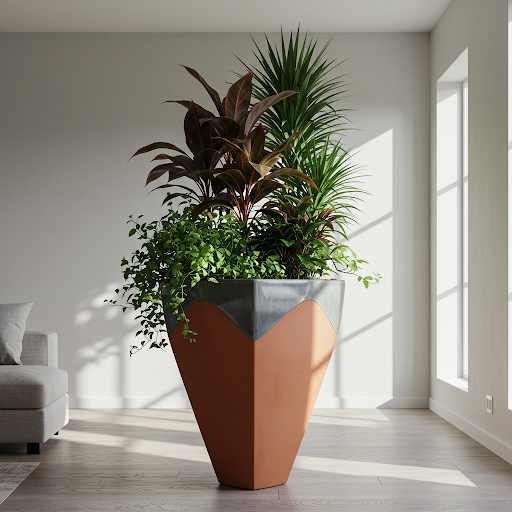
Conclusion: Proactive Care for Healthy Planters
While growing plants in planters can present its own set of challenges, understanding these common problems and knowing how to address them will set you up for success. By paying attention to your plants, providing the right environment, and taking proactive steps to prevent and solve issues, you can enjoy a vibrant and thriving container garden.
11THD
By greenship|2024-08-13T02:52:20+00:00August 13, 2024|Categories: Hand-carving Series|
11TH
By greenship|2024-08-13T02:50:25+00:00August 13, 2024|Categories: Hand-carving Series|
Modern Plant Pots丨Planter for Indoor Plants,8 inch or 10 inch Plant Pots with Drainage Hole,Decorative Flower Pots
By greenship-seo|2025-04-10T08:32:55+00:00January 7, 2025|Categories: Hand-carving Series|Tags: Decorative Flower Pots, Self-Watering Pots|
GreenShip 27inch Tall Planters for Porch, Large Outdoor Planter Pots with Drainage Hole
By greenship-seo|2025-04-10T06:27:21+00:00April 7, 2025|Categories: Hand-carving Series|Tags: Decorative Flower Pots|
KC2-11V
By greenship|2024-08-16T05:39:50+00:00August 16, 2024|Categories: Hand-carving Series|
k2-21G
By greenship|2024-08-13T06:17:26+00:00August 13, 2024|Categories: Hand-carving Series|

